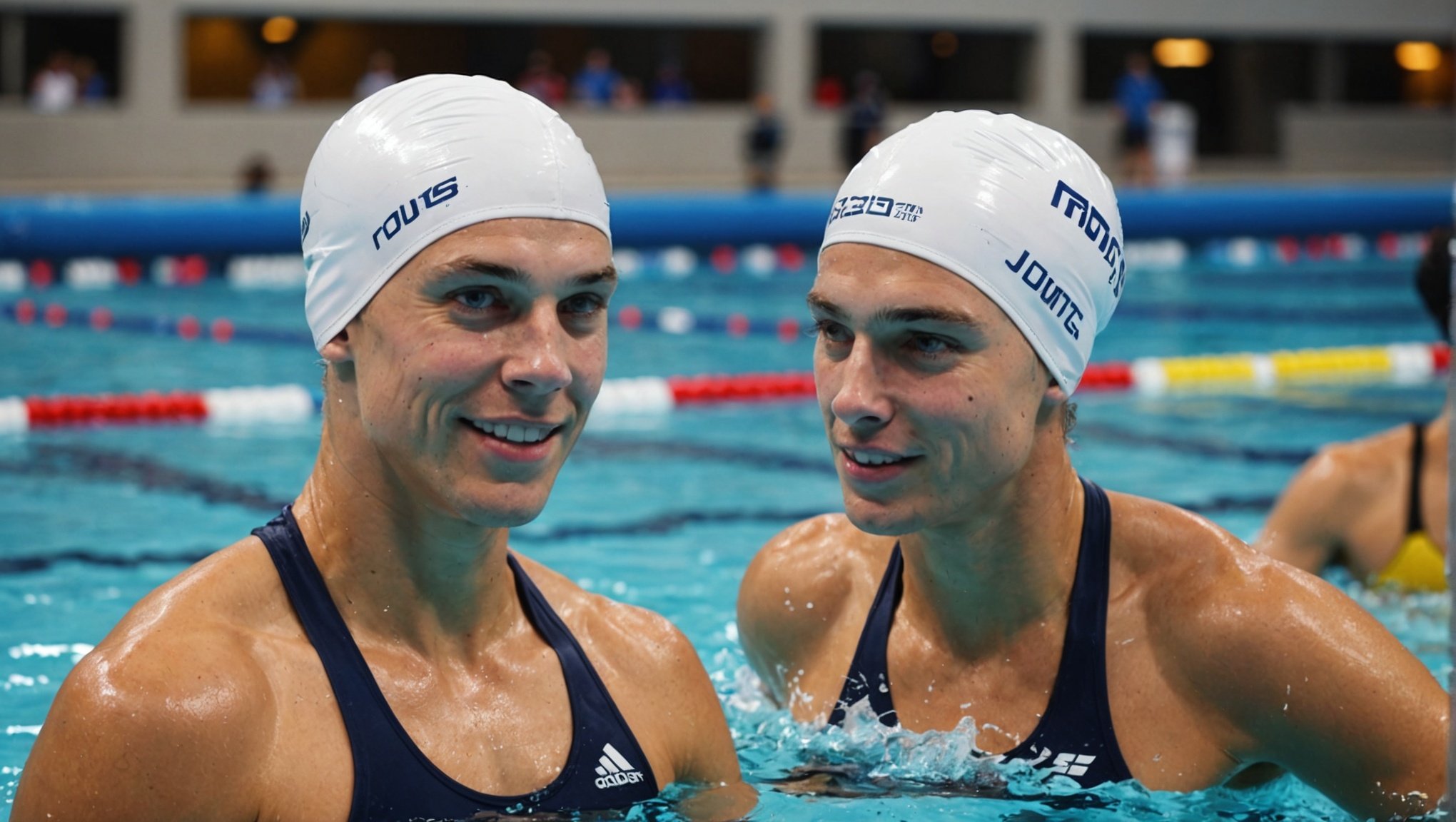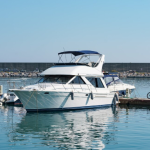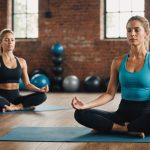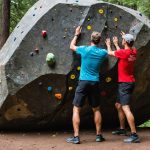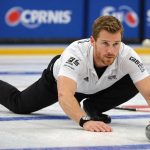Essential Post-Swim Strategies: Top Tips for Cooling Down After a Competitive Swim Meet
The Importance of Cooling Down in Competitive Swimming
Cooling down after a competitive swim meet is often overlooked, but it is a crucial component of a swimmer’s overall training and recovery regimen. When you’re in the midst of a intense swimming season, it’s easy to forget that what you do after your swim can be just as important as the swim itself. Here’s why cooling down is vital and how you can do it effectively.
Reducing Muscle Soreness and Injury
After a race, your muscles are under significant stress. Cooling down helps to reduce muscle soreness and the risk of injury. When you suddenly stop intense physical activity without a proper cool-down, your muscles can become stiff and prone to damage. A gentle cool-down routine, such as light swimming or stretching, can help your body transition smoothly from a high-intensity state to a resting state.
Also read : Essential Warm-Up Strategies to Minimize Injury Risk in Rugby: Your Ultimate Guide
Maintaining Heart Rate and Blood Flow
Cooling down also helps to gradually bring your heart rate and blood pressure back to normal levels. This is important because a sudden drop in heart rate can lead to dizziness or even fainting. By keeping your body moving at a lower intensity, you ensure that your heart rate decreases gradually, maintaining stable blood flow and preventing any adverse effects.
Effective Cooling Down Techniques
Here are some effective techniques to cool down after a competitive swim meet:
Also to discover : Exploring the Impact of Team Sports on Personal Performance: Unveiling the Psychological Benefits
Light Swimming
- Easy Laps: Swim a few laps at a leisurely pace. This helps to keep your muscles warm and your heart rate elevated but at a manageable level.
- Drills: Incorporate some light drills that focus on technique rather than speed. For example, you could do some kicking drills with a kickboard or use a pull buoy to isolate your upper body.
Stretching
- Poolside Stretching: Before you get out of the pool, do some light stretching to loosen up your major muscle groups. Focus on your shoulders, back, and legs.
- Dryland Stretching: Once you’re out of the pool, take some time to stretch on the deck or in a designated stretching area. Pay particular attention to areas that tend to get tight after swimming, such as your hamstrings and hip flexors.
Warm Down Exercises
- Leg Swings: Stand at the side of the pool and swing one leg forward and backward, then switch to the other leg. This helps to loosen your hip and leg muscles.
- Arm Circles: Hold your arms straight out to the sides and make small circles with your hands. Gradually increase the size of the circles as you continue.
Hydration and Nutrition After the Swim
Proper hydration and nutrition are critical components of the cool-down process.
Hydration Tips
- Immediate Hydration: After your swim, make sure to drink water or a sports drink to replenish lost fluids. Aim for 7-10 ounces (approximately 210-295 milliliters) of fluid every 10-20 minutes during and after your workout.
- Monitoring Hydration: Check the color of your urine to ensure you are adequately hydrated. Light-colored urine indicates good hydration, while darker urine suggests dehydration.
Nutritional Recovery
- Balanced Recovery Drink: Consume a balanced recovery drink that includes electrolytes to help replenish lost fluids and electrolytes. This can include sports drinks or specialized recovery beverages.
- Post-Swim Snack: Eat a light snack that includes a mix of carbohydrates and protein within 30-60 minutes after your swim. This helps in muscle recovery and replenishes energy stores.
Using Technology and Equipment for Enhanced Recovery
Modern technology and specialized equipment can significantly enhance your recovery process.
Swim Spas and Hot Tubs
- Muscle Recovery: Hot tubs are not just a luxury; they are a crucial component in the recovery routines of many Olympic swimmers. The warm water and jets provide hydrotherapy, which increases blood circulation, helping to deliver nutrients to muscles and remove waste products, thereby speeding up recovery.
- Enhanced Flexibility: The heat from the hot tub helps to relax muscles and increase joint flexibility, which is particularly beneficial for swimmers who require a full range of motion in their strokes.
Biomechanical Analysis
- Motion Capture Systems: Advanced tools like motion capture systems, underwater cameras, and pressure sensors provide valuable data on stroke mechanics, body alignment, and propulsion efficiency. This real-time feedback can help you make immediate adjustments to optimize your performance and recovery.
Mental Recovery and Stress Management
Cooling down is not just about physical recovery; it’s also about mental recovery and stress management.
Visualization and Mindfulness
- Mental Rehearsal: Use visualization techniques to mentally rehearse your race scenarios and overcome challenges. This can help you cultivate focus, confidence, and resilience.
- Mindfulness Meditation: Incorporate mindfulness meditation and deep breathing exercises into your cool-down routine. These techniques help swimmers stay calm and centered, reducing stress and anxiety.
Process-Based Mindset
- Focus on the Process: Adopt a process-based mindset, breaking down your goals into smaller, controllable steps. This reduces performance-crushing pressure and increases mental toughness. For example, instead of focusing on winning, focus on the steps you need to take to prepare for the race, such as getting to the pool early for dryland activation and warming up with intent.
Practical Tips for Cooling Down
Here are some practical tips to make your cool-down routine effective:
Create a Cool-Down Routine
- Consistency: Develop a consistent cool-down routine that you follow after every swim. This could include a combination of light swimming, stretching, and hydration.
- Listen to Your Body: Pay attention to how your body feels and adjust your cool-down routine accordingly. If you’re feeling particularly sore or tired, you may need to extend your cool-down period.
Use the Right Equipment
- Swimming Goggles: Even during cool-down laps, wearing swimming goggles can help you maintain proper form and reduce eye strain.
- Pull Buoy: Use a pull buoy to isolate your upper body and focus on your arm technique during cool-down laps.
Cool Down in Cold Water
- Cold Water Therapy: While warm water is beneficial for relaxation, cold water therapy can also be effective for reducing inflammation and muscle soreness. However, use cold water therapy judiciously and under the guidance of a coach or medical professional.
Example Cool-Down Routine
Here’s an example of what a comprehensive cool-down routine might look like:
Immediate Post-Swim (0-10 minutes)
- Light Swimming: Swim 200-400 meters at an easy pace to gradually bring down your heart rate.
- Hydration: Drink 7-10 ounces of water or a sports drink.
Poolside Stretching (10-20 minutes)
- Leg Swings: Perform leg swings to loosen your hip and leg muscles.
- Arm Circles: Do arm circles to loosen your shoulder and arm muscles.
- Stretching: Stretch your major muscle groups, including your shoulders, back, and legs.
Dryland Stretching (20-30 minutes)
- Hamstring Stretch: Stand with your feet shoulder-width apart and lean forward to stretch your hamstrings.
- Hip Flexor Stretch: Kneel on one knee with the other foot in front of you and lean forward to stretch your hip flexor.
- Chest Stretch: Stand in a doorway with your hands on the doorframe at shoulder height and lean forward to stretch your chest.
Recovery Nutrition (30-60 minutes)
- Balanced Snack: Consume a light snack that includes a mix of carbohydrates and protein.
- Hydration: Continue to hydrate by drinking water or a sports drink.
Cooling down after a competitive swim meet is not just an afterthought; it’s an integral part of your training and recovery process. By incorporating effective cooling down techniques, staying hydrated, using the right equipment, and managing your mental recovery, you can ensure that you’re ready for the next challenge in the swimming world.
As Olympic gold medalist Kyle Chalmers emphasizes, “Focusing on the process” is key. By breaking down your goals into smaller, controllable steps and maintaining a consistent cool-down routine, you can reduce pressure, increase mental toughness, and ultimately perform better in the pool.
So, the next time you step out of the pool after a race, remember that your work isn’t done yet. Take the time to cool down properly, and you’ll find that it makes all the difference in your performance and overall well-being.

